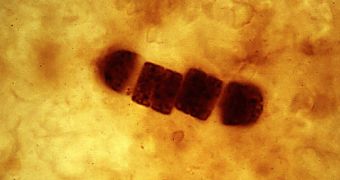New investigations appear to suggest that terraforming Mars is entirely possible, if future settlers use cyanobacteria for the job. These minute organisms are extremely resilient and adaptive, and they can undoubtedly defeat the harsh conditions of the Red Planet.
While it may be true that the microbes could pave the way for future human colonists, experts caution against believing that our neighboring planet could be transformed into an oasis any time soon.
If cyanobacteria can indeed work their magic on the Martian regolith, or soil, this will take some time until it becomes visible, and even more time before it starts influencing the local geology.
In the mean time, they could be used in special production facilities to aid human settlers in mining precious extraterrestrial resources from the ground, and also in synthesizing organic compounds.
The tiny rock-eating microorganisms are widely considered responsible for allowing Earth to become the hospitable place for life it is today.
They began conducting photosynthesis billions of years ago, gathering dangerous gases from the air, and emitting oxygen instead. This chemical in turn helped promote the development of more complex organisms, us included.
In the past, studies have shown that cyanobacteria is extremely resilient, and capable of surviving even in the harshness of space.
This was evidenced in experiments such as the BIOPAN exposure platform, and the EXPOSE platform aboard the International Space Station (ISS).
“They're quite capable of tolerating extreme conditions. But we were surprised at their abilities to tolerate some conditions such as vacuum,” says geomicrobiologist Charles Cockell.
He is based at the Open University, in the United Kingdom, Space reports. The expert says that it's very interesting how cyanobacteria can adapt to the harshness of space, and also to the large amount of radiation that exists in the cold vacuum.
“Humanity has been completely linked into the microbial world, so it's logical we would continue that relationship with microbes as we go into space. The question is how we can most productively optimize them going into space,” Cockell adds further.
He is however quick to point out that life on Earth took millions of years to develop. It took even more for the planet itself to become capable of supporting even the most basic life forms.
“Terraforming is more difficult because you're trying to change planetary conditions on a short timescale. It took hundreds of millions of years to do it on Earth,” Cockell concludes.

 14 DAY TRIAL //
14 DAY TRIAL //